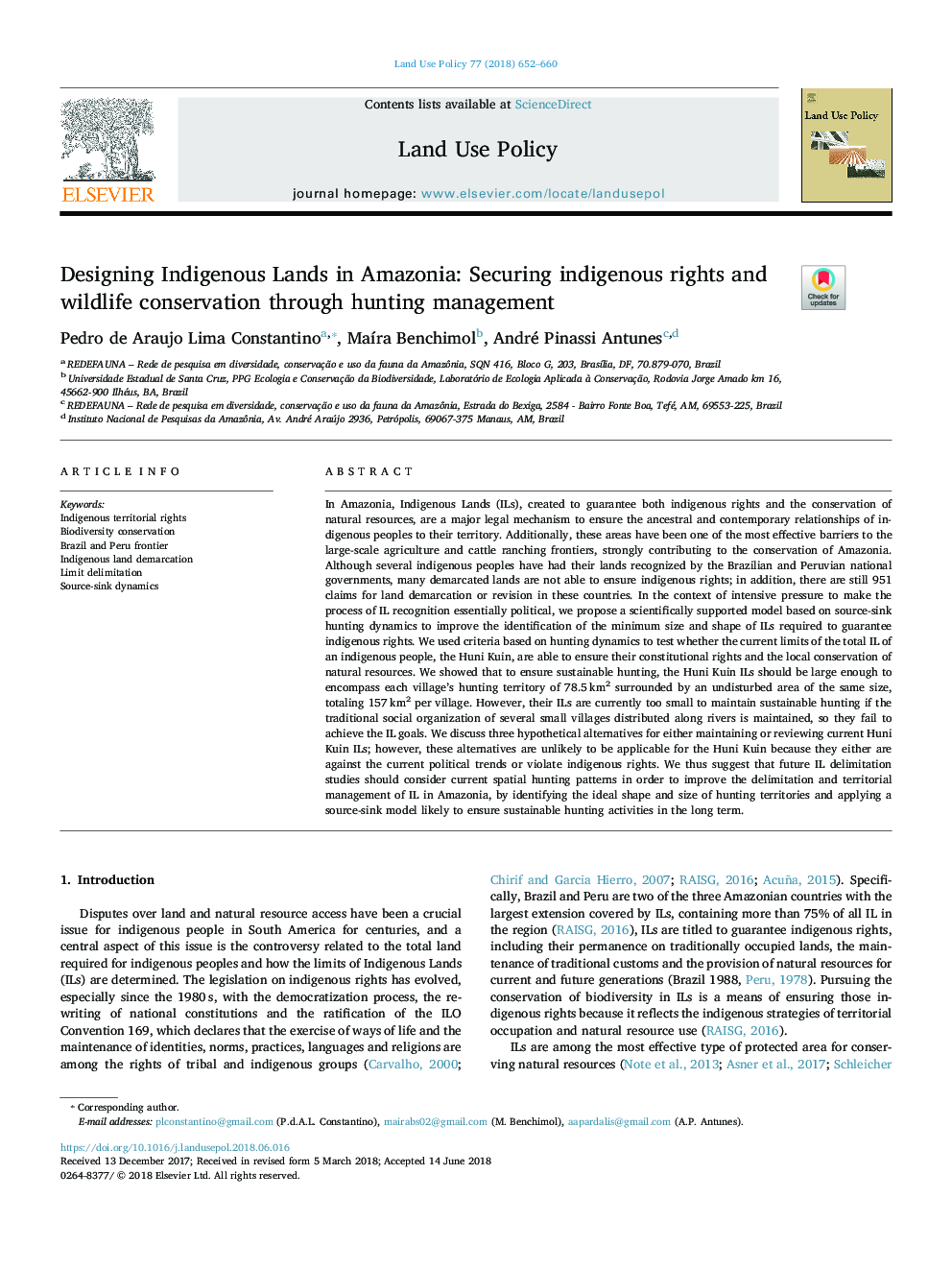| کد مقاله | کد نشریه | سال انتشار | مقاله انگلیسی | نسخه تمام متن |
|---|---|---|---|---|
| 6546195 | 1421806 | 2018 | 9 صفحه PDF | دانلود رایگان |
عنوان انگلیسی مقاله ISI
Designing Indigenous Lands in Amazonia: Securing indigenous rights and wildlife conservation through hunting management
ترجمه فارسی عنوان
طراحی زمین های بومی در آمازون: حفاظت از حقوق بومی و حفاظت از حیات وحش از طریق مدیریت شکار
دانلود مقاله + سفارش ترجمه
دانلود مقاله ISI انگلیسی
رایگان برای ایرانیان
کلمات کلیدی
حقوق بومی بومی، حفاظت از تنوع زیستی، مرز برزیل و پرو، تقسیم سرزمین بومی، تعریف محدودیت، دینامیک منبع سینک،
موضوعات مرتبط
علوم زیستی و بیوفناوری
علوم کشاورزی و بیولوژیک
جنگلداری
چکیده انگلیسی
In Amazonia, Indigenous Lands (ILs), created to guarantee both indigenous rights and the conservation of natural resources, are a major legal mechanism to ensure the ancestral and contemporary relationships of indigenous peoples to their territory. Additionally, these areas have been one of the most effective barriers to the large-scale agriculture and cattle ranching frontiers, strongly contributing to the conservation of Amazonia. Although several indigenous peoples have had their lands recognized by the Brazilian and Peruvian national governments, many demarcated lands are not able to ensure indigenous rights; in addition, there are still 951 claims for land demarcation or revision in these countries. In the context of intensive pressure to make the process of IL recognition essentially political, we propose a scientifically supported model based on source-sink hunting dynamics to improve the identification of the minimum size and shape of ILs required to guarantee indigenous rights. We used criteria based on hunting dynamics to test whether the current limits of the total IL of an indigenous people, the Huni Kuin, are able to ensure their constitutional rights and the local conservation of natural resources. We showed that to ensure sustainable hunting, the Huni Kuin ILs should be large enough to encompass each village's hunting territory of 78.5â¯km2 surrounded by an undisturbed area of the same size, totaling 157â¯km2 per village. However, their ILs are currently too small to maintain sustainable hunting if the traditional social organization of several small villages distributed along rivers is maintained, so they fail to achieve the IL goals. We discuss three hypothetical alternatives for either maintaining or reviewing current Huni Kuin ILs; however, these alternatives are unlikely to be applicable for the Huni Kuin because they either are against the current political trends or violate indigenous rights. We thus suggest that future IL delimitation studies should consider current spatial hunting patterns in order to improve the delimitation and territorial management of IL in Amazonia, by identifying the ideal shape and size of hunting territories and applying a source-sink model likely to ensure sustainable hunting activities in the long term.
ناشر
Database: Elsevier - ScienceDirect (ساینس دایرکت)
Journal: Land Use Policy - Volume 77, September 2018, Pages 652-660
Journal: Land Use Policy - Volume 77, September 2018, Pages 652-660
نویسندگان
Pedro de Araujo Lima Constantino, MaÃra Benchimol, André Pinassi Antunes,
